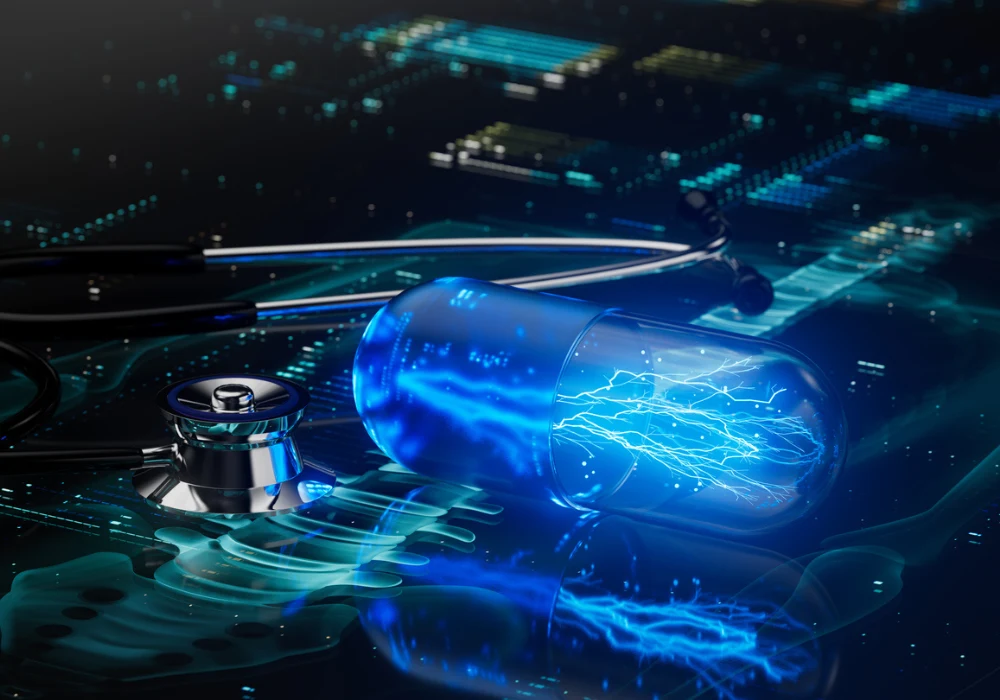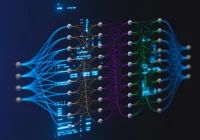A new wave of frontier technologies is converging to reshape how health systems diagnose, treat and deliver care. Artificial intelligence now acts as a force multiplier for other domains, from robotics to bioengineering, accelerating discovery and enabling more adaptive systems. Agentic AI introduces software agents that plan and execute multistep tasks, while advanced connectivity and specialised chips address rising compute demands. Alongside these digital shifts, innovation in bioengineering, autonomous mobility and sustainable energy points to more personalised therapies and new ways to move medicines. The trajectory is not uniform across trends, yet the direction is clear: technology is becoming more capable, collaborative and integral to solving complex healthcare challenges, as outlined in the McKinsey Technology Trends Outlook 2025.
AI and Agentic AI Move from Output to Action
Artificial intelligence has progressed from a tool that surfaces insights to a broad set of capabilities that power conversations, automate analysis and control physical systems. Multimodal models that process text, images, video and audio open creative and scientific frontiers, lowering the cost of deployment and widening access through smaller domain-specific models. Organisations are scaling adoption across the enterprise, though gaps in data privacy, output quality and ethics still shape governance. In practice, this means AI is increasingly embedded in workflows rather than treated as a standalone experiment, with competitive pressure driving integration into everyday tasks.
Agentic AI extends this shift by acting in the world rather than only responding. Built on foundation models, agents autonomously plan and execute multistep tasks, use digital tools designed for people and communicate with other agents. In healthcare-relevant contexts, that can include navigating websites, completing forms or orchestrating steps across systems. Agents are being applied to long-tail, unpredictable tasks where rule-based automation struggled, and to software development where multistep reasoning accelerates code generation and testing. Adoption remains at the experimentation stage, yet interest and talent demand are rising as organisations probe how to combine human and digital labour, how much autonomy to grant and what guardrails are required for reliability and accountability.
These AI advances are not occurring in isolation. They depend on improvements across the stack, from model efficiency to infrastructure. As inference costs fall and small models improve, AI becomes feasible in more devices and settings, including those closer to patients. At the same time, responsible innovation remains a gatekeeper to adoption, with transparency, fairness and governance influencing scale and speed.
Internal link: MedTech in 2025: Main Trends Reshaping the Industry
Foundations: Compute, Connectivity and Digital Trust
Delivering AI-enabled healthcare at scale requires foundations that can manage compute-intensive workloads and protect sensitive data. Application-specific semiconductors are emerging to meet the exponentially higher demands of AI training and inference while managing cost, heat and power consumption. This fuels new products and ecosystems that support both data centre scale and edge deployment, allowing leaders to balance centralised capability with local control.
Advanced connectivity complements this shift. Low-Earth-orbit satellites and high-bandwidth networks provide access to real-time data and cloud tools in remote locations, reducing the distance between advanced computation and point of care. Cloud and edge computing evolve in tandem, with vast training infrastructure on one side and lower-power technology embedded in devices on the other. This dual growth supports both massive general-purpose models and domain tools that can run almost anywhere, a useful combination for healthcare environments that mix central services with bedside or community delivery.
Digital trust and cybersecurity underpin every interaction. As technologies become more powerful and personal, trust becomes the determinant of adoption. Governance, accountability and safety frameworks are essential for AI models and agentic systems, and they extend to other health-relevant domains such as identity, consent and provenance. The report illustrates this with a chain-of-custody example that uses biometric blockchain to secure each required medication, showing how trust architectures can accompany a therapy from production to delivery. In parallel, observability tools and model risk controls help organisations monitor behaviour and performance across the AI life cycle, supporting reliability at scale.
Cutting-Edge Engineering Transforms Care Pathways
Beyond digital foundations, engineering advances are changing how therapies are created and how care is delivered. In bioengineering, clinicians can design personalised treatments, including approaches that transform a tumour biopsy into targeted antibodies aimed at eliminating cancer cells. This sits alongside accelerated scientific discovery powered by AI, which helps identify patterns and optimise design, demonstrating how computational and biological progress reinforce one another.
Autonomous mobility and robotics broaden delivery options. The report highlights autonomous drones that deliver critical medications to remote or underserved areas, reducing delays and extending reach. Robotics is moving from pilots to practical applications, with systems that learn, adapt and collaborate. As autonomy matures, coordination across dynamic environments supports tasks that demand precision and repeatability, laying groundwork for safer operations in controlled clinical settings and beyond.
Immersive and human-machine collaboration technologies add another layer. More natural interfaces, multimodal inputs and adaptive intelligence enable training environments and sensor-enabled wearables that respond to human intent. The narrative is shifting from replacement to augmentation, dissolving boundaries between operator and co-creator. In parallel, the future of energy and sustainability technologies matters for healthcare estates. Managing power constraints and improving efficiency help facilities host compute-intensive systems while advancing sustainability goals, an increasingly relevant factor as AI workloads grow.
These threads converge in combined scenarios. The outlook describes personalised medicine delivery that links bioengineering for bespoke therapies, autonomous drones for last-mile logistics and digital trust for secure custody. The power lies in the combination, where multiple trends interact to unlock outcomes that no single technology can deliver on its own.
Healthcare stands at the intersection of accelerating AI, stronger digital foundations and cutting-edge engineering. Artificial intelligence is scaling across workflows, agentic systems are moving from output to action and infrastructure is evolving to support compute, connectivity and trust. Bioengineering, robotics and autonomous mobility extend personalisation and reach, while immersive tools and wearables align technology with human intent. Progress is uneven across trends, and governance remains central to reliability, yet the direction points to more adaptive and collaborative systems. Leaders who align strategy, talent and guardrails with these trajectories will be best placed to translate frontier innovation into measurable gains for patients, operations and resilience.
Source: McKinsey & Company
Image Credit: iStock










